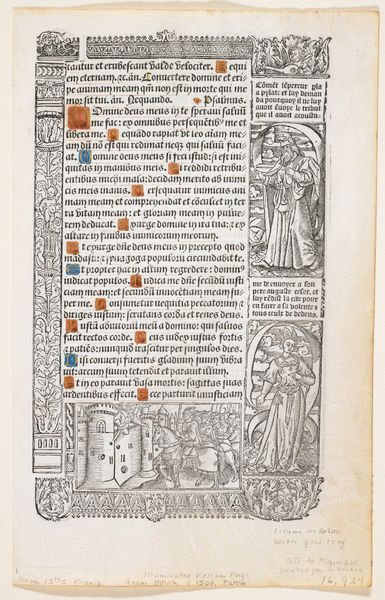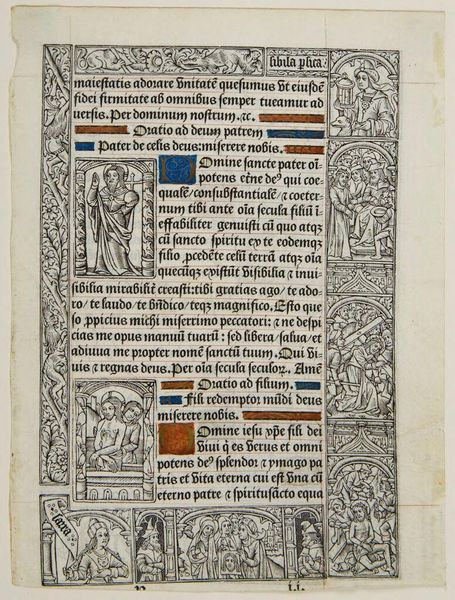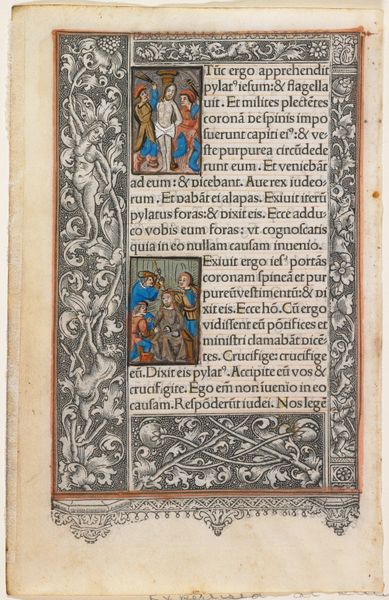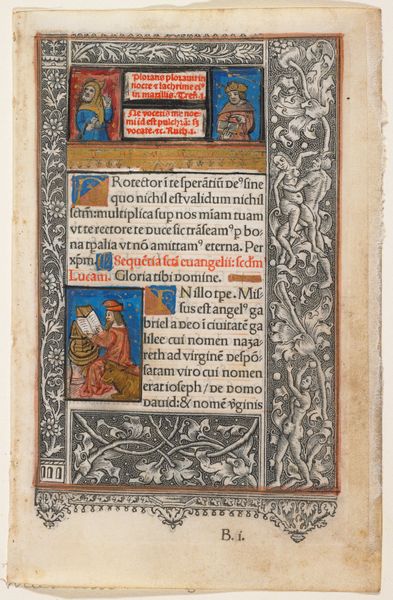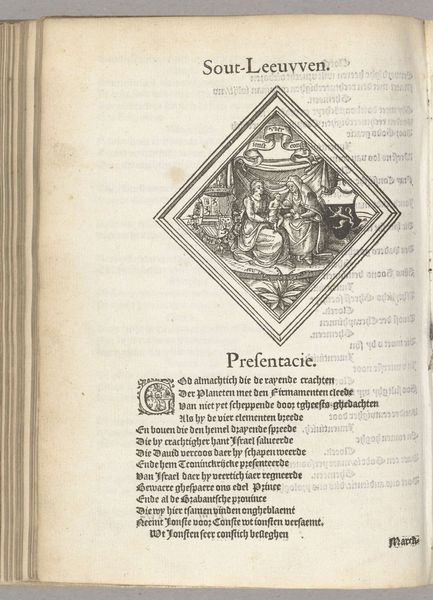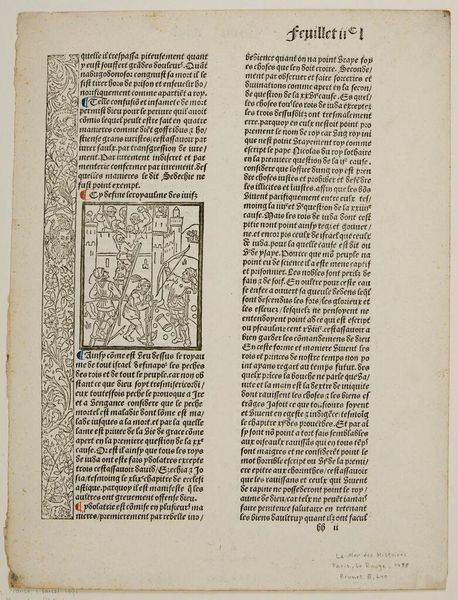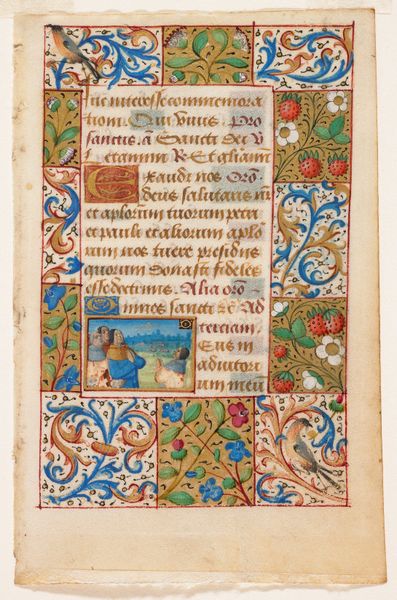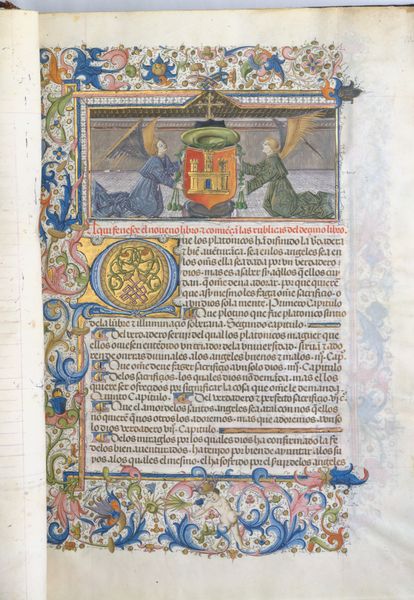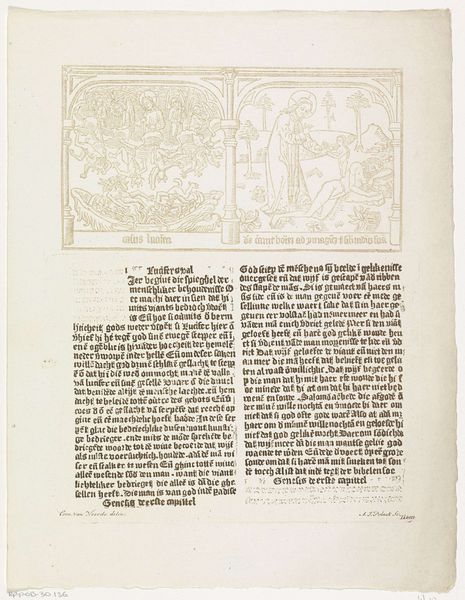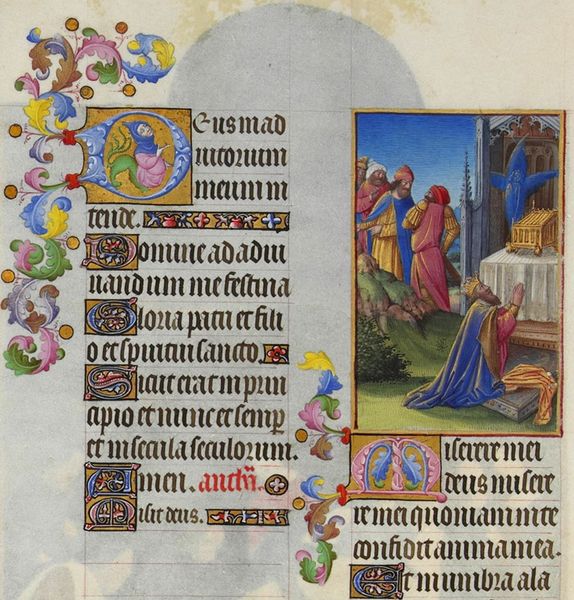
drawing, print, paper, ink
#
drawing
#
medieval
# print
#
paper
#
ink
#
miniature
Dimensions: 137 × 88 mm
Copyright: Public Domain
Curator: Let's explore this page from a Book of Hours. It's called "Death of Virgin," created by Philippe Pigouchet. The Art Institute of Chicago holds this particular print, which uses ink on paper. Editor: It feels intricate, almost claustrophobic, yet oddly comforting. All that close linework creates such a detailed little world. Is this a drawing, or what sort of material are we looking at? Curator: Pigouchet primarily worked with woodcut prints for books like these. They're basically early mass-produced images. This specific print employs drawing and printing techniques to render the image. Books of Hours like this one became extremely popular devotional items. Editor: Devotional, yes, I see that now! So the production process itself—creating these multiples, made it accessible beyond the wealthy elite. Were they hand-painted? Curator: Some finer versions would be illuminated by hand, but often, prints like this one would be sold "as is" to appeal to a broader market and lower the costs for smaller purses. Editor: Right, this makes me consider labor: from the artist carving the woodblock to the printers churning them out—the value resides not only in the image but also the means and scale of its production for wider consumption. Tell me more of the historical context. Curator: The late medieval and early Renaissance periods saw an increase in personal piety. These Books of Hours were guides, personalizable to fit individuals, so this particular page highlights how images and the labor involved catered to specific spiritual and socio-economic needs. It puts the politics into imagery through their very production and usage. Editor: Thinking about Virgin’s Death – the scene itself— isn’t particularly joyous. However, you are drawn into it; that sense of comfort might be because so many people have communally experienced its narrative arc through related prints. I guess there is something comforting about mass sharing and identifying with this type of devotional art. Curator: Exactly! And that accessibility transforms art’s public role. Now I understand better why this rather inexpensive work on paper resonates so powerfully despite the subject matter. Thanks for shedding light on that, and on the work of the many hands behind it. Editor: A truly thought-provoking artwork, indeed!
Comments
No comments
Be the first to comment and join the conversation on the ultimate creative platform.

